There are various reasons for revision rhinoplasty, including the border of the implant being visible, a deviated implant, the patient’s own dissatisfaction, looking too obviously operated, etc.
For revision rhinoplasty, finding the cause as well as understanding what the patient feels and thinks about the current condition is important. To break out of a vicious circle of revision surgery, the revision rhinoplasty should be performed by experienced rhinoplasty experts.
The CDU medical team consists of senior surgeons with 23 years of clinical experience and a high understanding of implant characteristics, gained by researching the most popularly used rhinoplasty implant (SOFTXiL).
Surgery Duration
Approx. 60-90 min
Hospitalization
No
Stitches Removal
After 7 Days
Anesthesia
Local and Sedation
Recovery Period
7 Days
The Most Propitious Time for Revision Rhinoplasty

Patients may consider revision rhinoplasty when the outcome is not desirable or there is a functional issue such as breathing problems, pain, etc.
We understand that dissatisfaction may cause anxiety or worry. However, during the surgery, the skin and tissues are irritated. During the early stage of recovery, even though the wound outside seems fully recovered, swelling remains on the nose and the inside of the wound is not recovered yet.
Therefore, it is better to wait long enough (at least six months) for the wound to mature and for the swelling to resolve before deciding on revision surgery.
Recommended When

- An implant is deviated or movable.
- The skin on the tip or dorsum become too thin or reddish.
- The implant is too visible through the skin.
- Infection occurs after surgery.
- The nose is contracted.
- The shape is undesirable.
When do I need to have early-revision surgery?

There are some cases that require early-revision rhinoplasty: infection, deviated implant, or the possibility of implant protrusion.
1. Infection
Infection after rhinoplasty can be detected right after surgery with the naked eye, or it can develop later over time. There are many causes of infection such as a low-quality implant, an unhygienic surgical environment, surgery performed in an inappropriate way, the patient’s lifestyle, or the body’s adverse reaction to foreign materials. In this case, immediate treatment with medication or early correction is required.
Symptoms of Infection
- Abnormal swelling
- Skin becoming reddish
- The area feels hot
- Throbbing or pain
- Pus and an odd smell
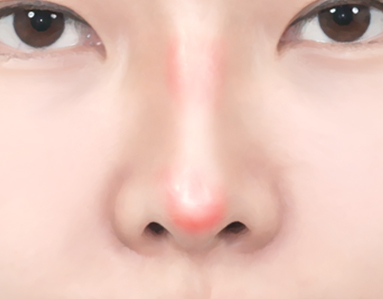
2. Deviated implant
If the implant is deviated right after surgery, early correction is required.
Before the tissues around the implant heal and scar tissues form, the implant position can be corrected easily.
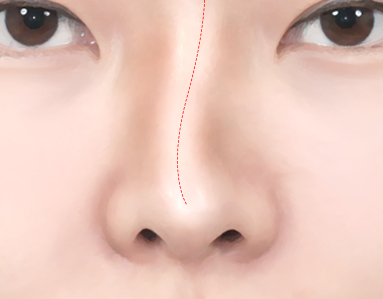
3. Skin on the nose is reddish and there is a possibility of implant protrusion
When the length of the implant is too long or an L-shaped implant is used, the implant puts a lot of pressure on the skin. Over time, the skin may become thinner and the implant can break the skin and come out.
In this case, immediate revision surgery is required. The skin needs to be reinforced with artificial dermis and the implant should be swapped with a shorter one or removed.
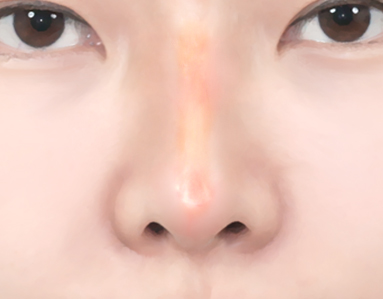
Various Cases of Revision and Solutions

1. Deviated implant
When the implant seems deviated, the centerline of the face or the nasal bone structure needs to be checked.
If the face or the nasal bone itself is asymmetrical or deviated so that the centerline is deviated, the implant should follow the centerline or the bone to achieve bilateral symmetry.
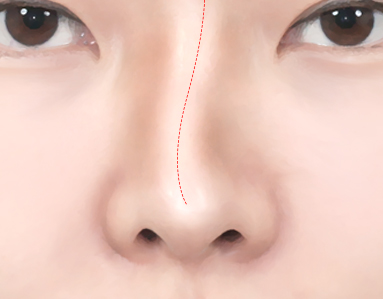
Solution
If the bone is asymmetrical, the implant can be corrected with osteotomy. However, in cases where the implant shape is inappropriate, the deviation can be corrected by securing a sufficient implant pocket and replacing the current implant with a correctly-shaped implant.
2. When the implant is movable
If the implant is inserted right under the skin, not the periosteum, the implant can be movable. In this case, the symptom can be easily corrected by changing the position of the implant to underneath the periosteum.

Solution
If the surgeon expects that the implant is moving because the periosteum is already damaged, gore-tex or autogenous tissues can be used instead of an implant.
3. Visible implant through the skin
When an inappropriately sized implant which does not align with the nasal bone and cartilage is used, the skin is too thin, or the skin loses its elasticity, the border of the implant may be visible.
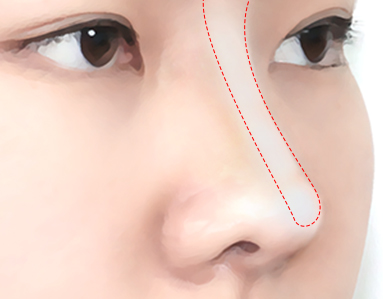
Solution
In the case of thinned skin, changing the layer of the implant to deeper layers or reinforcing the skin with artificial dermis or autogenous tissues can help the condition. In the case of an inappropriately sized implant, the condition can improve by having a correctly sized and shaped implant.
4. The implant is too high or too low
When the initial surgeon’s design is not balanced in the face, the height can be dissatisfactory, or the implant can seem too low to the patient after swelling resolves.
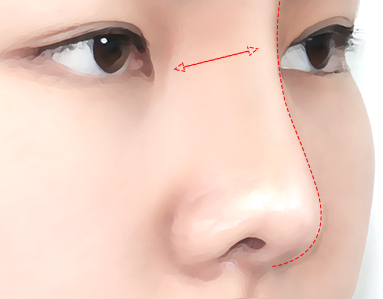
Solution
In this case, by figuring out the patient’s needs, the implant can be changed.
5. When the tip is too bulbous
The ideal nose needs to be harmonious from the bridge to the tip. When only a radix graft is performed, the tip seems comparatively low or flat as the bridge becomes higher.
Alternatively, when the cartilage is too weak to support the implant, the tip can collapse, becoming bulbous.
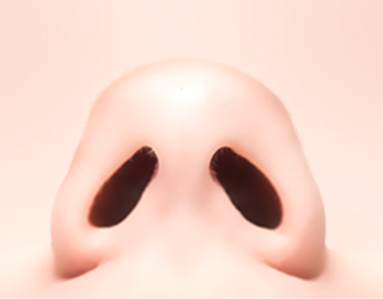
Solution
Therefore, if the patient desires overall changes, tip plasty, as well as a radix graft, are recommended simultaneously.
6. When the tip droops down
When an inappropriate implant is used, the cartilage on the tip is weak, or the cartilage on the tip is absorbed, the tip can droop down.
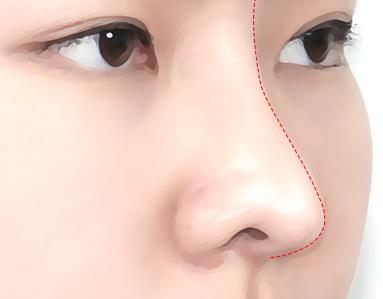
Solution
This condition can be improved by changing the implant or reinforcing the alar cartilage.
7. When the tip rotates upwards or is distorted
This can be a symptom of nose contracture. The cause of contracture varies, so the cause should be accurately discerned through consultation with an experienced rhinoplasty surgeon and revision rhinoplasty should be performed.
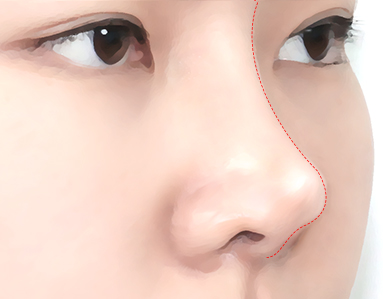
Solution
Seek consultation with experienced rhinoplasty surgeon.
8. When the tip skin becomes reddish or white
This may be due to blood circulation issues caused by thinned skin. If this is not corrected at the right stage, the implant or the cartilage can protrude from the skin.
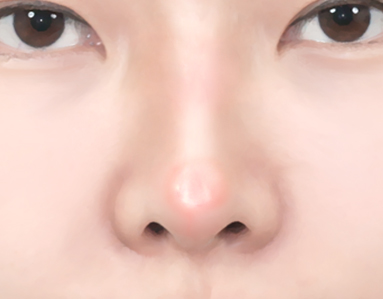
Solution
In this case, the problematic implant or cartilage should be removed to lower the burden on the skin and the skin should be reinforced with autogenous or artificial tissues.
9. Illegal injection on the nose
The illegal injection can’t be removed completely, but we can try to remove most of the illegal injection and try to perform revision surgery, avoiding the use of foreign materials.

Q&A About Revision Rhinoplasty

No, it is not. The nose is safe after the recovery process after a certain time has passed. Even a nose with no implant or surgical history needs surgery if the nose gets injured or receives trauma. So, rhinoplasty doesn’t mean a nose is weaker than an original nose.
No, it is not. The recovery process can differ depending on one’s physical condition at the time. For example, if a patient in an unhealthy condition undergoes primary surgery, the recovery process can be longer than the recovery process for a patient in a healthy condition.
However, most revision surgeries are more intensive than primary surgery, so the recovery may be longer than primary surgery.
CDU’s Signature Technique Preventing Tip Droopiness

Tip droopiness is quite a common complaint from patients after tip plasty or rhinoplasty using autogenous tissues. Autogenous tissues such as ear, septal, rib cartilage or dermofat are often used because body tissues have considerably lower rates of infection.
However, they have a high absorption rate once they are grafted into the body, and the rate differs depending on the individual’s physical characteristics.
To prevent tip drooping, CDU uses a different technique, achieving an effective result in a less invasive way.
1. SOFTXiL
One thing people overlook is the implant. The quality of the implant determines the possibility of infection, satisfaction, and shape.


- SOFTXiL is the number one implant at the heart of the plastic surgery industry, used by 85% of plastic surgery clinics.
- Furthermore, CDU’s medical team developed SOFTXiL with their 20 years of surgical experience.
- CDU’s medical team knows the best about the implant characteristics, which allows us to achieve a safe and longer-lasting nose tip.
2. Wrapping-edge Augmentation
Autogenous tissues have a tendency to be absorbed into the body. Furthermore, once an implant is attached to alar cartilage, the gathered cartilage can become detached due to pressure, creating a gap. The implant can go into the gap, which causes the tip to widen and tip droopiness.
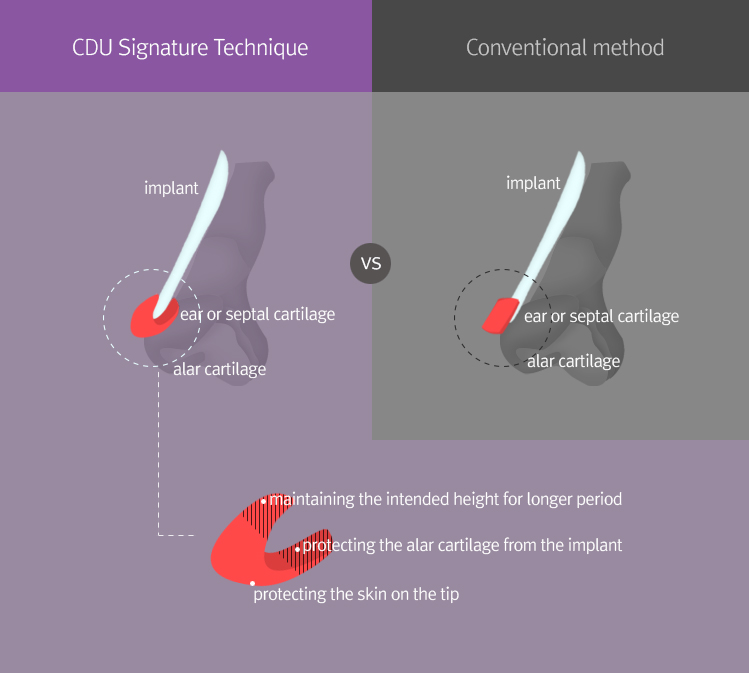
By wrapping the implant edge with ear cartilage, the top part of the ear cartilage is not easily absorbed into the body, so the height is maintained as it is attached to the implant. It also protects the skin on the nose tip from the implant. The bottom part of the cartilage and the alar cartilage are adhered each other, so the alar cartilage does not break out easily.
3. Alar Sculpting Suture
When the alar cartilage is gathered using the best technique, the tip can achieve its best height. Generally, when the skin is thicker than usual or patients would like to achieve a dramatic result, rib cartilage (the hardest of any autogenous cartilage) can be considered.
The shape and result may be good, but the tip may be stiff. Furthermore, surgery requires general anesthesia and leaves scars where the cartilage is harvested.
However, at CDU, with the doctors’ 20 years of experience, an ideally defined and high tip can be created without using a lot of cartilage or rib cartilage.

